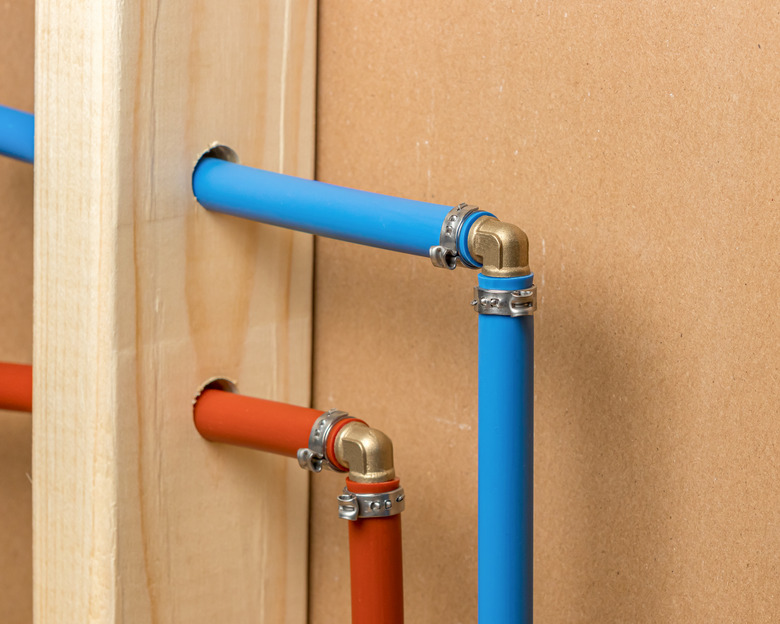Can You Use Sharkbite Fittings On Hot Water Lines?
We may receive a commission on purchases made from links.
SharkBite is a specific brand name for plumbing fittings known as push-to-connect fittings. As their name suggests, these fittings allow you to simply push pipes together to connect them rather than soldering copper or using more complex pipe-joining systems. Extremely popular with homeowners, SharkBite fittings make completing simple plumbing tasks much easier for DIYers.
Tip
Yes, you can use SharkBite fittings on hot water lines. Remember, however, that they only work with copper, PEX, and CPVC pipes.
The Mechanics of a SharkBite
The Mechanics of a SharkBite
Like many of the most helpful inventions, SharkBite fittings are both brilliant yet deceptively simple. Inside a SharkBite is a stop that prevents you from pushing a pipe too far into the coupling. An O-ring ensures your new plumbing connection won't leak, and a row of metal teeth holds the pipe firmly in place. There's also a collar mechanism that you can release with a special tool if you need to remove the SharkBite later.
Where to Use a SharkBite
Where to Use a SharkBite
There aren't many places where you can't use a SharkBite, as long as you're using it to connect the proper types of piping and to move water only. SharkBite fittings aren't designed for use with gas- or air-piping systems. They do, however, work for copper, CPVC, and PEX plumbing applications and make it easy to transition from any of these pipe types to another.
You can use a SharkBite to make underground plumbing connections and to connect pipes inside walls. You should, however, wrap underground connections in silicone self-adhesive tape to protect the connections. It's also wise to make an access panel when installing a SharkBite inside a wall, just in case you need to get to it later. SharkBite fittings work on both hot and cold water lines and have no issues with household water pressure.
How to Use a SharkBite
How to Use a SharkBite
To use a SharkBite, begin by cutting your pipe to the desired length using a pipe cutter to ensure a straight edge. Next clean and deburr the cut end of your pipe. Failing to do so can damage the O-ring inside the SharkBite and create a leak. Next measure the proper insertion depth on the outside of the pipe. You can use a depth gauge tool or the depth chart provided by SharkBite on their website.
Now that everything is ready, simply push the SharkBite fitting onto the end of the pipe, making sure you go all the way to the depth mark you made. Note that you can spin the SharkBite coupling even when it's properly installed. This is an intentional feature that helps you align the coupling more easily when working in tight spaces. It doesn't indicate a problem.
A Few SharkBite Don'ts
A Few SharkBite Don'ts
SharkBite fittings are easy to work with, but there are a few things you should avoid. One is getting the coupling dirty. When working on a plumbing project, leave the SharkBite in its wrapper unit until you're ready to use it. This prevents particles of dust and debris from finding their way into the coupling where they could disrupt the seal and cause a leak.
When joining PEX piping, you must use a line stiffener to protect the thin, flexible tubes from damage. SharkBite fittings come with this stiffener preinstalled. If you're using copper or CPVC pipe, don't remove this stiffener. Doing so is unnecessary and could damage the SharkBite.
Finally, try and avoid reusing SharkBite couplings. Technically, SharkBite fittings are reusable, but too many uses can cause wear in the O-ring and result in a leak. You may get away with reusing a SharkBite once or twice, but you may want to rethink using one more than that. If you do, use it in an open application where you can easily access it if a leak develops.
